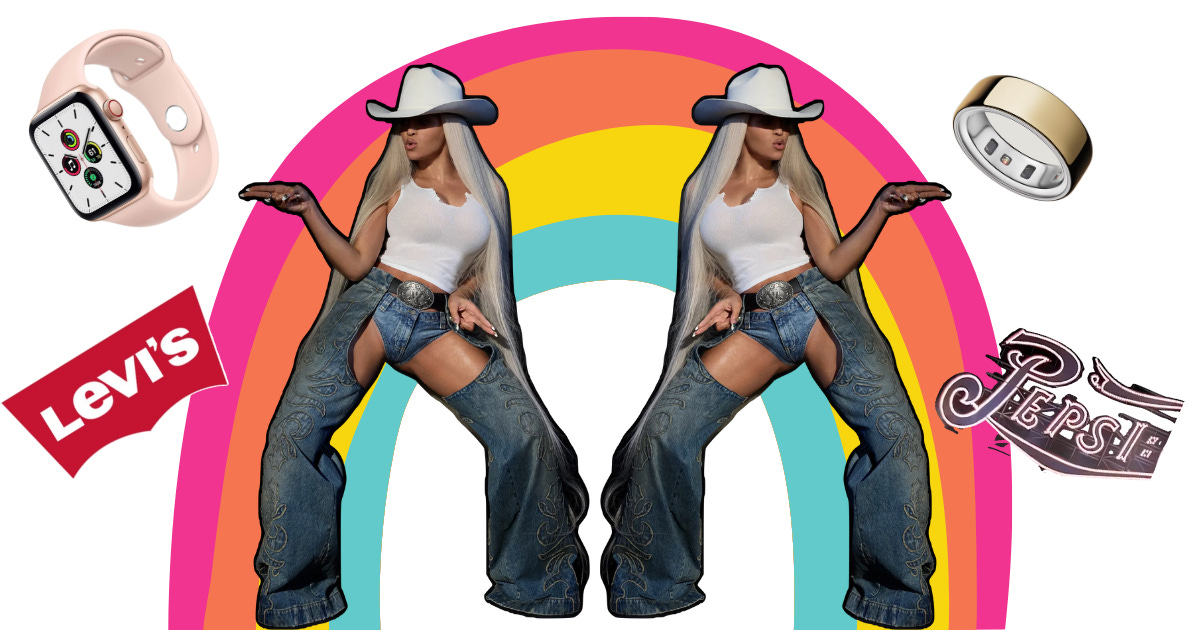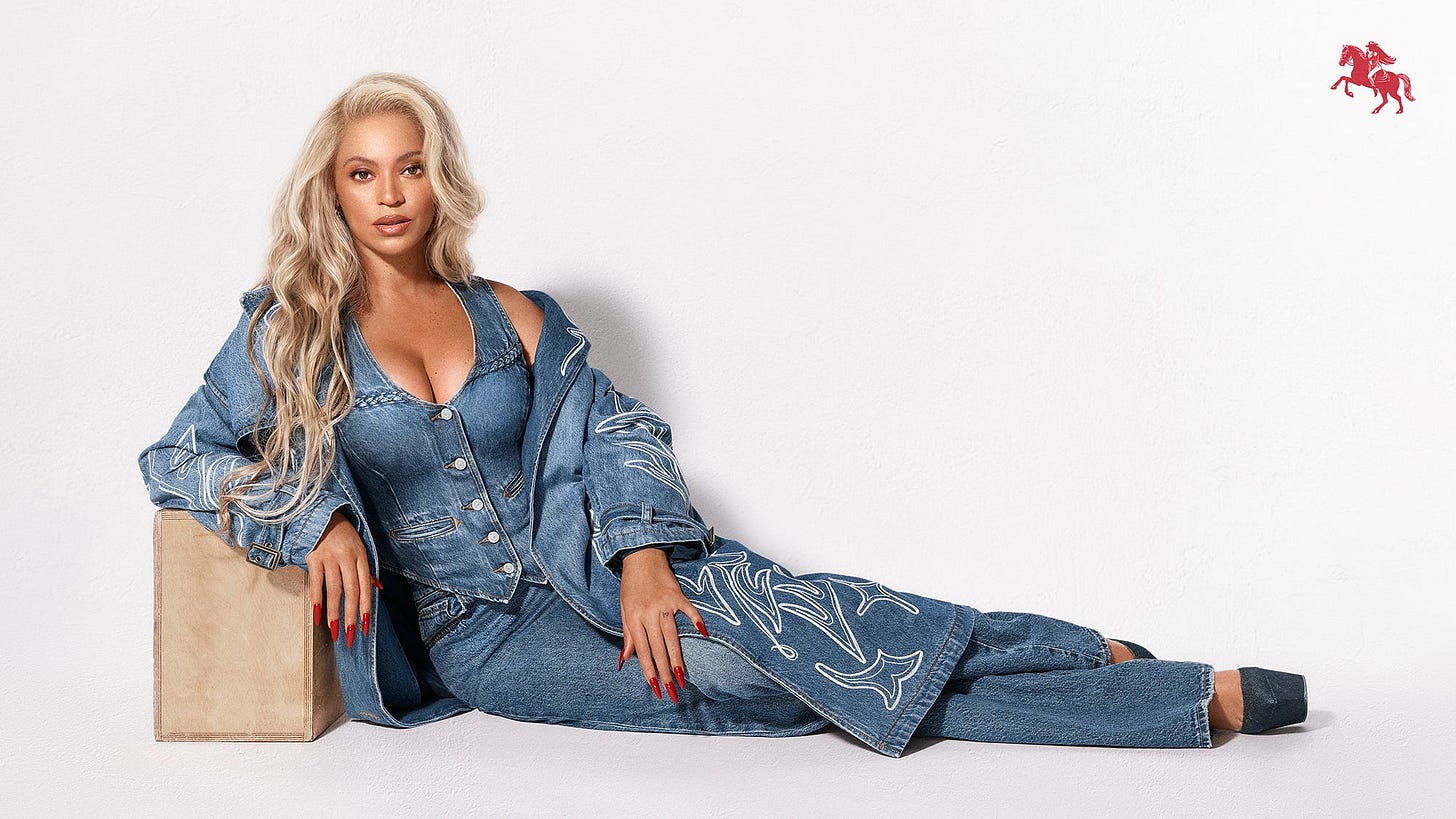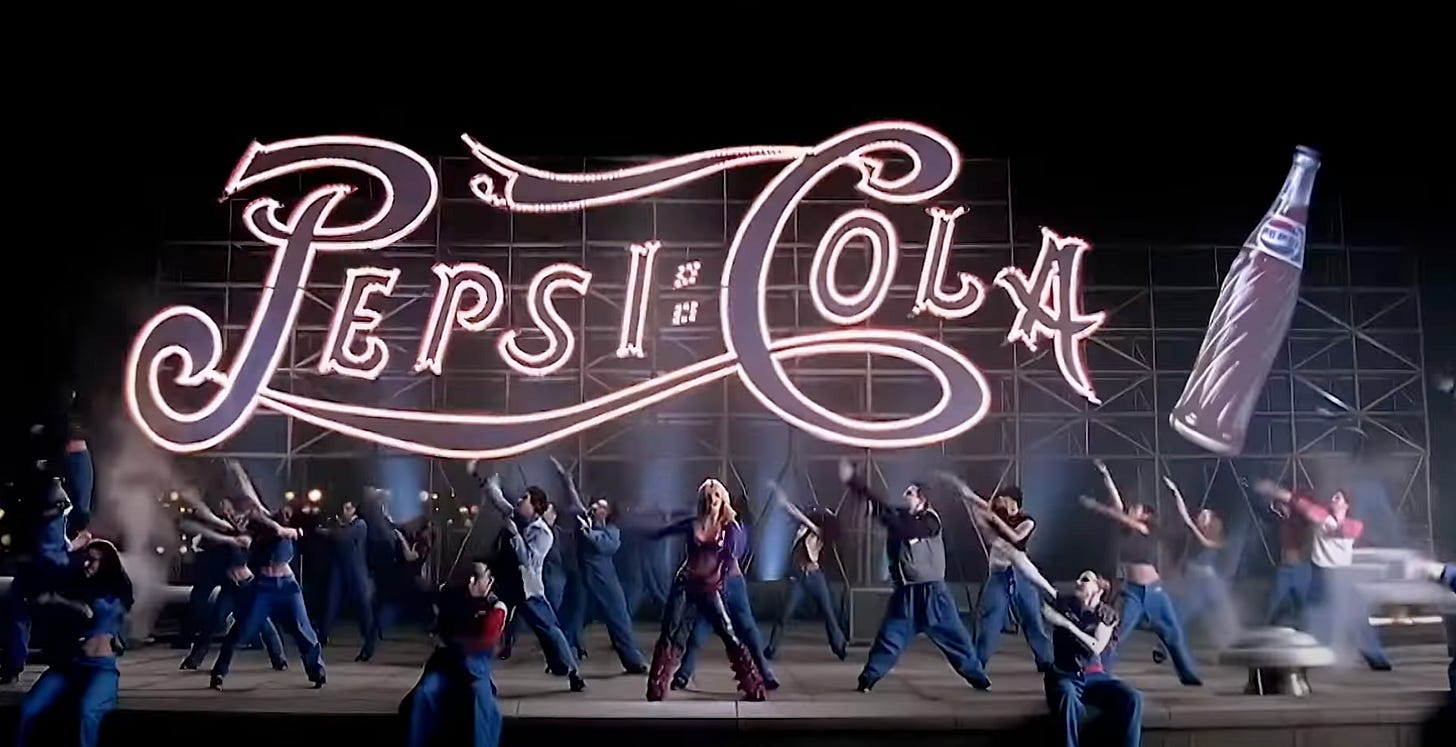Is Your Playlist a Secret Ad? Wearable Wars & the Music Collab Economy
Oura vs Apple Watch, Beyoncé vs Britney & social media for brands
Issue #5
Oura Ring vs. Apple Watch = Wellness Guru vs. Fitness Buddy
Four months ago I kissed my Apple Watch of seven years (!) goodbye and replaced it with the Oura Ring 4. It was a bittersweet moment because she’d seen me through some milestone phases of my life:
My 20 kgs weight loss transformation while I was living in Manila
My “Wow, I can get texts on my watch!” phase
The 1000km running challenge I completed in 2019 using my watch for music
My “I can take photos on my phone from my watch 😏” phase
A global pandemic where I had nothing to take photos of & we all moved into cyberspace
…subsequently leading to my “how do I turn the texts off on this thing” phase
For the past three-ish years, I’d switched off all its social features and used it purely as a fitness tracker for workouts, runs and steps. I wanted something more minimal—and to finally track my sleep, which I never found comfortable with the watch. I’m also a sucker for great design (yes, I know… who isn’t?), so I loved that the ring looks like jewelry and is more versatile vs my watch.
So how does the Oura Ring compare to the Apple Watch? Fear not, I’m not about to (read: equipped to) dive into a full-blown evaluation of the tech. This is just my personal assessment of how the two stack up in the realms of fitness and lifestyle and why I made the switch.
Sleep & Holistic Wellness
If you prioritize sleep quality and overall well-being, the Oura Ring has a serious edge. It monitors your sleep stages and physiological signals (heart rate variability, temperature) to give you a Readiness Score each morning—basically letting you know how recharged (or not) you are. It’s like having an older sister whisper, “You got this today.” I say older because I have a younger one who definitely does not wake me up like that (hers is more air horn than affirmation).
The Apple Watch, while it can track sleep duration and phases, doesn’t provide a single recovery or go/no-go metric.
Oura’s temperature sensor also helps predict menstrual cycle phases; Apple Watch can retroactively estimate ovulation, but my older version didn’t. In my experience, the Oura’s cycle tracking has replaced the Clue app I trusted for years, giving me deeper insights and more accurate predictions. The ring’s constant vitals monitoring has even flagged potential illnesses before symptoms show - a study during the pandemic found it could detect early physiological changes 76% of the time pre-symptoms.
Fitness & Activity Tracking
On the flip side, if you’re all about fitness and performance, the Apple Watch definitely outshines the Oura Ring. Built-in GPS for mapping runs and rides, real-time heart rate zones, ECG capabilities - it’s like having a mini workout coach on your wrist. Oura has no display or GPS and has been consistently mislabeling my workouts that don’t involve much hand movement, like yoga or lifting. Both track steps and calories, but Apple’s ring-closing system can be super motivating if you love that gamified push and to compete in challenges with friends like I did (you can take the girl out of sport, but…)
Oura, by contrast, is more about balancing your day with your Readiness Score rather than urging you to go all-out every day. I loved the detailed Apple cardio metrics - especially my VO2 max since I’m a runner - and I dearly miss them.
That said, I’m deeep in my self-care era (and this is a disturbingly accurate description of it) so you best believe I know exactly how many minutes of REM sleep I got last night. And if it’s on the lower side, you best believe my husband and neighbors know, too. 💆🏻♀️
Marketing Approaches: Apple’s (Non)Retention vs. Oura’s Persistence
As a longtime Apple Watch user, I was surprised that Apple never really tried to keep me in the ecosystem. Zero targeted emails, zero content nudges to remind me why I might want their newest watch. Meanwhile, Oura’s acquisition game was intense—my social feeds lit up with ring ads, and I got bombarded by influencer posts featuring Oura’s sleek design. Once I bought the ring, the onboarding experience included well-written health newsletters that made me feel like part of a wellness club, not just a product buyer.
Apple, by contrast, seems to rely on its name recognition and loyal fans. Case in point: I recently visited the Apple Store at The Grove to buy a new phone (a tale for next week’s newsletter), only to discover a huge Apple event underway with top fitness coaches and an award-winning female runner. When I asked the organizer why I hadn’t heard about it—considering I’m the ideal audience—she said Apple doesn’t email about these events; you just have to check the store website. From a marketing standpoint, that felt lazy and like a missed opportunity to engage devoted fitness enthusiasts.
Wrapping It Up
Design-wise, I adore how the Oura Ring looks and that its battery lasts nearly a week. Apple Watch definitely needed daily charges. On the flip side, Apple’s core fitness features are free, while Oura’s “membership” costs $5.99/month on top of the ring’s price tag. Still, I’m happy with my choice: Oura is my wellness guru, while Apple Watch remains a best-in-class fitness buddy for those who want it all on their wrist. Whichever route you choose, it’s wild that we now have personal health data—sleep cycles, potential fevers, heart rates—beamed to us in real time.
The Music Collab Economy – When Songs Become Product Placements 2.0
Speaking of workouts, my go-to warm up track has been Beyoncé & Post Malone’s “Levii’s Jeans” for a hot minute now and every time I hit play, I find myself wondering (mid lunge, usually) how much money Levi’s is making each time I stream it. So I did a little digging to see if the denim brand is actually getting a slice of Beyoncé’s streaming pie - and whether they paid a fortune for the privilege.
First, a Mini History Lesson
Music as marketing isn’t new. Run-DMC’s 1986 hit “My Adidas,” landed them a then-groundbreaking $1.6 million endorsement deal. After that, brand mentions were mostly casual shoutouts or ad campaigns (like Britney Spears’ iconic Pepsi commercials) rather than fully brand-centered tracks.
The New Twist: Songs Engineered as Brand Collabs
In today’s streaming era, brand-driven songs themselves sometimes launch hand in hand with the brand’s marketing strategy. Enter “Levii’s Jeans,” Beyoncé and Post Malone’s 2024 surprise track that’s more than a sly spelling tweak. Levi’s followed up with a global campaign starring Beyoncé and Post Malone, recreating vintage 1980s ads with a modern spin.
Levi’s calls it their biggest partnership ever and reportedly shelled out around $25 million for Beyoncé as a global ambassador (Post Malone’s role may have bumped the budget). She’d been loosely tied to Levi’s for about three years, but this collab made it official, giving Levi’s a likely royalty slice from “Levii’s Jeans.” Whether it covers the cost is unclear, but Levi’s is banking on the cultural buzz.
Other Brand-Infused Hits
Plenty of artists - both famous and emerging - have hopped on the brand-collab train. K-pop group NewJeans teamed with Coca-Cola on “Zero,” a breezy track dedicated to Coke Zero, while Bad Bunny joined forces with Corona for a campaign that threaded its way into his music videos. Then there’s S1mba’s “Rover,” which I personally love (it’s a serious bop and also a key track in my workout playlist), but ironically wasn’t sponsored at all - just a spontaneous homage that ended up boosting Range Rover’s street cred among Gen-Z.
What’s Driving This Trend?
For artists, brand collabs bring fresh revenue in an era of shaky sales and tours. For brands, it’s a way to more organically tap into the cultural zeitgeist, as consumers become increasingly sensitive to on-the-nose push marketing. A catchy name-drop can linger on TikTok or playlists far longer than a standard ad—blurring the line between commercial and entertainment.
Will Fans Cry Sellout?
That depends on execution. If the track sounds like a hollow jingle, listeners check out. But if the artist’s personal style aligns with the product—like Beyoncé’s well-documented love of denim—fans will roll with it. Some songs mention brands purely for vibes or bragging rights. It’s not going away soon, especially with big brand successes like Lil Nas X’s name-drop of Wrangler in “Old Town Road” and the immediate sellout of Wrangler jeans thereafter (sorry if the chorus is stuck in your head now 😬).
Music is becoming an increasingly lucrative stage for product placement. Songs aren’t just artistic expressions anymore; they’re often carefully orchestrated marketing vehicles, sometimes with big dollars behind them. So if you catch yourself humming a tune about jeans or soda, you’re probably soaking up a slice of brand messaging.
Marketing, baby… it’s everywhere.
Social Media & Growth Strategy – A Quick Teaser
In my previous role at Nike, a brand that needs no introduction, our social media playbook was all about control and polish. We rarely jumped on fleeting trends or improvised on the fly. Even our “reactives”—content pegged to live sporting events—were extensively planned in advance so we could hit “publish” the instant our athlete or team claimed victory. Everything was purposeful, precisely on-brand, and carefully timed.
Now, in my new role at a fast-growing fintech startup, I’m taking almost the opposite approach. Because the brand is still finding its voice, we’re experimenting with a broader range of content—from playful, trend-driven posts to more serious, insight-packed messaging. It’s made me step back and consider how social media’s function can shift dramatically depending on your brand’s age, identity, and industry. Stay tuned!
Must Watch
If you haven’t already, you NEED to watch Lewis Hamilton’s epic Ferris Bueller’s Day Off recreation to celebrate his first season with Ferrari. Iconic on all fronts and he really left no stone unturned in the production - including partnering with Paramount Pictures themselves to obtain the rights. In a world of AI generated everything, Hamilton went old school and it was the coolest surprise for anybody who is an F1 or Ferris Bueller fan.
Watch here.
Coming Up Next on Culture Curve…
#️⃣ Social media & growth: Why it matters, how it changes by industry, and whether your brand can skip it
🍸Sober curious: I might be ditching the booze, but the jury is out on my commitment to the cause
🎸 LA concert season: These venues have transformed seasonal marketing into an experience, and I’m here for it
Encore next week?
- Kasvi









